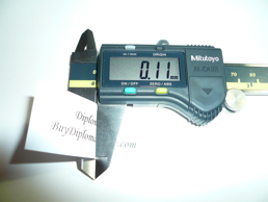Parchments or Diploma Papers
We have a wide selection of diploma papers available, from archival grade to the most popular and widely used stationery. For archival grade paper we are using, it is made with at least 20% cotton, or acid free and premium virgin pulps that meet ISO 9706, requirements for permanence. Those paper has a life expectancy of at least 500 years for average grades. The high quality furnish of this type of paper give a very pleasant touch!
Some universities use common cardstock for printing diplomas, as it is cheap and easy to print. Some schools use a higher grade of paper, but there is one common theme we hear from our customers:
“I want parchment paper.”
We often have trouble responding to this request, as many people don’t realize what parchment paper actually is. In general, there are two types of parchment styles:
Parchment Look is a paper developed to represent parchment color. It is cheap, and you can find it in many stationery shops.
Another type is very similar to real parchment and vellum in look and feel, though it is still paper. Mostly produced in Europe, it is expensive with a limited supply, and some comes pre-printed with a watermark. It is archival-grade paper, and can keep for several hundred years without any problem (metamerism). Have you ever seen how a curatorial staff in a museum repairs their paintings and historic documents? This is the paper they are using. Very few schools use this type of paper, and the ones that do are mostly in Britain and Australia. Some of the paper types are translucent and may not be suitable for printing.
Below is a short list of papers we use most often. The numbers are for our internal reference.
Blue = Archival Grade
It is important to know that no single paper is suitable for all printing. Paper weight and finishes play a crucial role, as this affects the printing and post-printing process (foil stamping, embossing, etc.) as well.
Most college and university diplomas use 28 lb to 92 lb diploma paper. That is around 104 gsm to 250 gsm. Anything below that weight will be too thin and look informal, while paper above that weight will be too thick to print (in terms of mass production).
Another measurement for diploma paper is its thickness, or what we call caliper. Take a look at the below pictures, in which we have taken a caliper measurement of a few diplomas:
A normal printing paper called bond paper (bottom right), a diploma issued from a school (top left), diploma paper sample one (bottom left), thicker diploma paper sample two (top right).
In general, a diploma paper’s thickness is between 0.18 mm and 0.30 mm, but there is no rule for saying thicker is better. It is entirely up to the school council members’ preference and the printing process that will be used.
As for paper finishes, if you were to hand a blank sheet of paper to an experienced paper manufacturer, he or she might be able to tell immediately what brand it is. This is because each paper mill has a different look to their specific brand of paper finish! Here again, it is like a banknote, because you can’t very well fake the different look and feel of paper finishes. Want to make some fake money? Unless you are able to get your hands on some paper from Arjo Wiggins (the banknote paper supplier for over 150 countries) or Fabriano in Italy, don’t even think about it.





